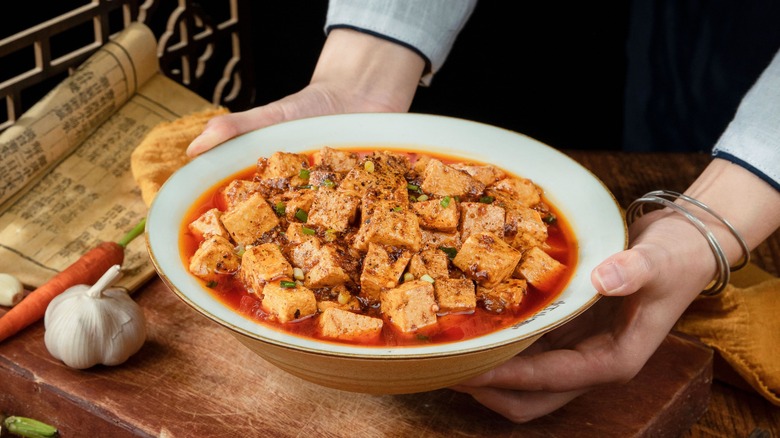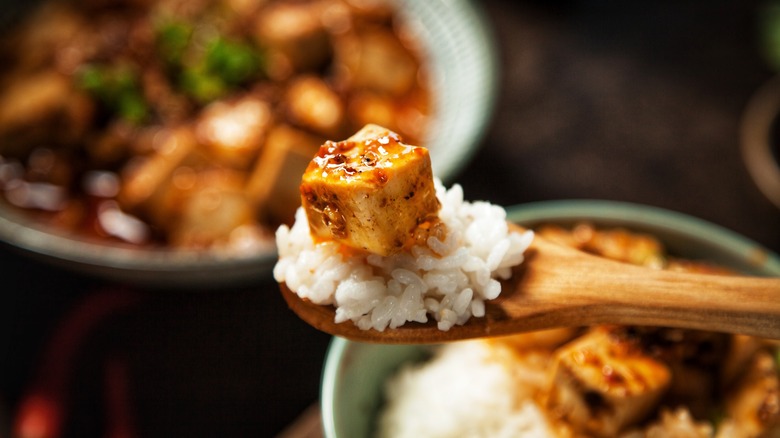The Chinese Origins Of Mapo Tofu
There's nothing quite like biting into a spoonful of silky tofu and having its fiery sauce leave your lips and tongue numb and tingling. This is the charm of mapo tofu, one of Sichuan, China's most popular dishes. But mapo tofu's reach has expanded beyond China — it's also gaining fans in the U.S. as more restaurants serve Sichuan cuisine, recreating its intense flavors using some pantry essentials.
However, behind this dish that dates back to 1862 is an unfortunate origin story of its name. Lore has it that mapo tofu was created by an elderly woman with smallpox scars on her face. Her dish became renowned for its fiery spiciness and people began calling it mapo tofu after her, with "ma" meaning "pock-faced" and "po" meaning "old woman."
A version of this story has the woman living in seclusion outside Chengdu due to her so-called disfigurement. When an affluent traveling businessman sought shelter at her place during a heavy storm, she happily prepared food for him. Impressed by her cooking, the businessman spread the word about the dish and soon, people were traveling to her place to taste it. Another version of the story has the woman married and running a restaurant named Chen Xing Sheng with her husband. Its frequent patrons were laborers who saved money by bringing their own stocks of tofu, beef, and oil for her cook.
Mapo tofu is celebrated for its mouth-numbing heat
Regardless of which version of the origin story is true, what remains is that mapo tofu is built on three foundational seasonings that give it its uniquely rich, umami, and spicy flavor: Sichuan peppercorns, chili oil, and doubanjiang.
Sichuan peppercorns are unique because of the tingling sensations they create on the lips and the tongue. When paired with chili oil, they create mala, a uniquely Sichuan flavor that leaves the mouth numb with spiciness. Chili oil also gives mapo tofu its vibrant red color. Meanwhile, the doubanjiang, a spicy chili bean sauce, adds a fiery umami to the dish.
Since tofu can take on the flavors of the ingredients it is cooked with, it's the best accompaniment to this trio. It must be soft and silky like custard, however, so its creaminess balances the heat of the seasonings. Savory ground pork also complements the other ingredients, not just flavor-wise but also with its texture, although it can be easily replaced with shiitake mushrooms for a vegetarian take on mapo tofu.
"Mouth-numbingly spicy" certainly sounds intimidating, but balancing that fiery spiciness is the key to a delicious mapo tofu. A slurry made with fermented bean paste, cornstarch, and water added with a bit of sugar does the trick.

